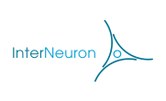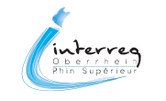Magdalena Schlesiger: Long-range GABAergic modulation of temporal and spatial coding in the medial and lateral entorhinal cortex
| When |
Dec 07, 2021
from 05:15 PM to 06:00 PM |
|---|---|
| Where | Zoom Meeting. Meeting ID and password will be sent with e-mail invitation. You can also contact Fiona Siegfried for Meeting ID and password. |
| Contact Name | Fiona Siegfried |
| Add event to calendar |
|
Abstract
Long-term memory for events is thought to depend on the interaction of the hippocampus with widespread neocortical sites. By virtue of its connectivity, the entorhinal cortex is ideally situated to influence this process: It forms strong reciprocal connections with hippocampus and neocortical areas and receives input from various subcortical areas known to modulate long-term memory formation. In the first part of my talk, I would like to share insights of how subcortical input from the medial septum modulates mnemonic coding in the medial division of the entorhinal cortex (MEC).
Neurons in the MEC form complex representations of space and, by oscillatory activity in the theta range, are highly organized in the temporal domain. We have recently shown that different subsets of MEC inhibitory neurons receive differential input from GABAergic long-range projecting neurons in the septum: MEC fast-spiking neurons (putative PV+ neurons) receive input from septal PV+ neurons, whereas MEC low threshold spiking neurons (putative SOM+ neurons) receive input from septal CB+ neurons.
Here, we demonstrate that the septal PV+ projection modulates theta rhythmicity in the MEC, while the septal CB+ projection drives phase precession and supports working memory. In the second part of my talk, I will focus on the lateral division on the entorhinal cortex (LEC). The LEC is functionally distinct from MEC in that it lacks sophisticated spatial firing and theta oscillations. Instead, LEC neurons code for objects and their locations as well as other variables such as time. I will show preliminary data investigating how interactions between MEC and LEC influence entorhinal function and introduce ideas for future experiments featuring the role of dopaminergic input to LEC.
More about the speaker and her research





